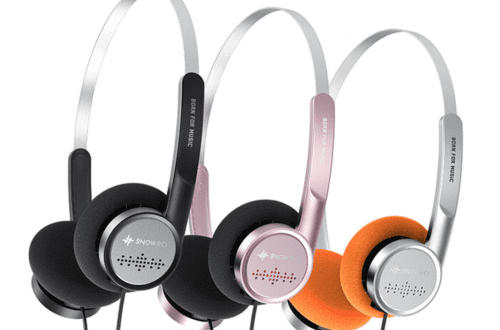ACG Diary: Retro Handheld Gaming (Emulator) Parameters Guide & Buying Tips
Recently, the blogger purchased a retro handheld gaming device. Since the blogger had zero prior knowledge about retro handhelds, they created this table while figuring things out. The “Recommended CPU” column represents what the blogger considers a good current choice and does not mean lower-tier CPUs can’t run the games (but performance below this tier will likely be unsatisfactory). CPU model selections are primarily based on popular handheld devices; other CPU models can be cross-referenced accordingly. If you spot any errors, please leave a comment for correction. Thanks!
Additionally, the blogger has compiled a large collection of Chinese-translated games available for download.
Recommended CPU Performance Ranking:
Snapdragon 8 Gen 2 > Dimensity 8300 > Snapdragon 865 ≈ Dimensity 1200 > Tiger T820 ≈ Snapdragon 845 > Tiger T610 ≈ Snapdragon 665 > Rockchip RK3566 > Allwinner H700
| System (Emulator) | Era | Screen Size | Aspect Ratio | Output Resolution | Recommended CPU |
|---|---|---|---|---|---|
| Arcade (Final Burn Neo) | 1971 | N/A | ~4:3 | 384×224 (Typical) | Tiger T820 Dimensity 1200 Snapdragon 865 |
| Atari (Stella) | 1977 | TV Output | 4:3 | 160×192 | Allwinner H700 Rockchip RK3566 |
| FC/NES (Mesen) | 1983 | TV Output | 4:3 | 256×240 | Allwinner H700 Rockchip RK3566 |
| MD/Genesis (Genesis Plus GX) | 1988 | TV Output | 4:3 | 320×224 | Allwinner H700 Rockchip RK3566 |
| GB (SameBoy) | 1989 | ~2.6 inches | ~10:9 | 160×144 | Allwinner H700 Rockchip RK3566 |
| SFC/SNES (Mesen S) | 1990 | TV Output | 4:3 | 256×224 | Allwinner H700 Rockchip RK3566 |
| PS1 (PCSX ReARMed) | 1994 | TV Output | 4:3 | 640×480 | Allwinner H700 Rockchip RK3566 |
| SS (Kronos) | 1994 | TV Output | 4:3 | 704×480 | Tiger T820 Dimensity 1200 Snapdragon 845 |
| N64 (Mupen64Plus) | 1996 | TV Output | 4:3 | 640×480 | Tiger T610 Snapdragon 665 |
| GBC (SameBoy) | 1998 | ~2.6 inches | ~10:9 | 160×144 | Allwinner H700 Rockchip RK3566 |
| PS2 (PCSX2) | 2000 | TV Output | 4:3 / 16:9 | 640×480 – 1920×1080 | Tiger T820 Dimensity 1200 Snapdragon 865 |
| GBA (mGBA) | 2001 | ~2.9 inches | 3:2 | 240×160 | Allwinner H700 Rockchip RK3566 |
| NDS (DeSmuME) | 2004 | Top: ~3.0″ Bottom: ~3.0″ | 4:3 (both) | 256×192 (each) | Tiger T610 Snapdragon 665 |
| PSP (PPSSPP) | 2004 | ~4.3 inches | 16:9 | 480×272 | Tiger T610 Snapdragon 665 |
| Wii (Dolphin) | 2006 | TV Output | 16:9 | 480p – 1080p | Tiger T820 Dimensity 1200 Snapdragon 865 |
| PS3 (RPCS3) | 2006 | TV Output | 16:9 | 720p – 1080p | Snapdragon 8 Gen 2 |
| 3DS (Citra) | 2011 | Top: ~3.53″ Bottom: ~3.02″ | Top: 5:3 Bottom: 4:3 | Top: 400×240 Bottom: 320×240 | Tiger T820 Dimensity 1200 Snapdragon 865 |
| PS Vita (Vita3K) | 2011 | ~5.0 inches | 16:9 | 960×544 | Dimensity 8300 Snapdragon 865 |
| Wii U (Cemu) | 2012 | TV + GamePad (~6.2″) | 16:9 | TV: 1080p GamePad: 854×480 | Dimensity 8300 Snapdragon 865 |
| Switch (YUZU) | 2017 | ~6.2 inches | 16:9 | 720p | Snapdragon 8 Gen 2 |
These parameters should be very helpful for choosing a retro handheld (at least the blogger found them essential), especially the output aspect ratio, which is crucial when selecting devices with different screen sizes. For example, the blogger purchased a handheld with a 5.5-inch 16:9 screen. When scaled to fit common emulator output ratios, the maximum usable display sizes are as follows:
| 16:9 (Native) | 5:3 (Scaled) | 4:3 (Scaled) | 3:2 (Scaled) | 10:9 (Scaled) |
|---|---|---|---|---|
| 5.5 inches | 5.24 inches | 4.49 inches | 4.86 inches | 4.03 inches |
Based on these calculations, the scaled display sizes are all larger than the original consoles’ screens (the blogger isn’t overly concerned with perfect pixel-for-pixel “point-to-point” rendering). This ensures a baseline playable experience. The blogger also advises calculating this yourself before buying, especially if choosing a 4:3 aspect ratio handheld. Be sure to check the scaled 16:9 display size to avoid ending up with an unreadably small image when playing games.
3DS Screen Size Conversion on 5.5″ (16:9):
- Top Screen (Scaled): ~3.11 inches
- Bottom Screen (Scaled): ~2.66 inches
A special note on dual-screen emulation (NDS/3DS):
On a 5.5-inch 16:9 screen, displaying both 3DS screens side-by-side at their original aspect ratios requires scaling them down to approximately 85% of their original size. This results in a top screen of ~3.11 inches and a bottom screen of ~2.66 inches. However, most emulators allow adjusting the scaling independently (e.g., enlarging the top screen while shrinking the bottom). Overall, while NDS is manageable on a 5.5″ 16:9 display, 3DS can be slightly annoying.
For optimal 3DS emulation:
A 1:1 (square) aspect ratio display is ideal. Calculations show that a 5.13-inch square screen can display both 3DS screens at their original sizes and proportions without scaling. This is the most suitable aspect ratio for 3DS.




